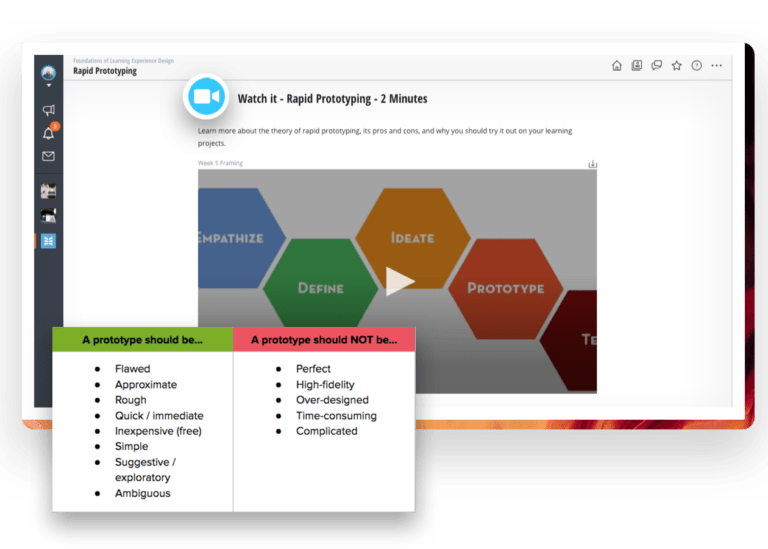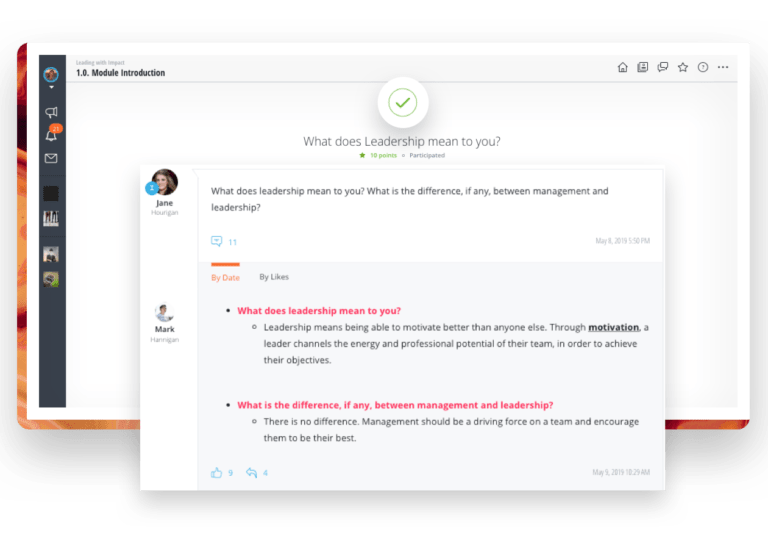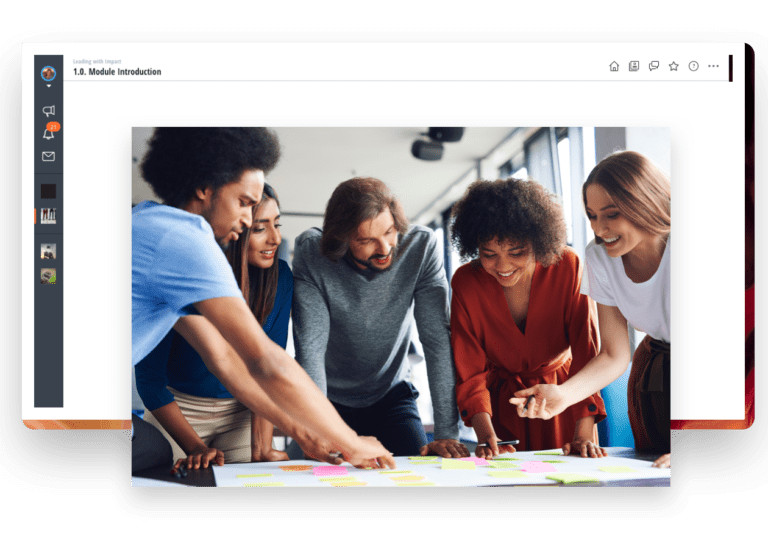“We needed a collaborative, interactive, modern learning environment that would help working professionals immediately put into practice what they are learning.”
Erin Streeter, VP Certification Products, ForresterFoster a Culture of Innovation and Design Thinking
A no-code solution for bringing practice, application, feedback, discussion, coaching and mentoring together into a coherent experience. Contextualize your learning experience to develop the necessary innovation, creativity, and problem-solving skills needed for your business to be more competitive. Build the capabilities, mindsets, and culture that foster breakthrough innovation.
Uncover opportunities, challenge assumptions, and address complexities

Capabilities that go beyond skill mastery to instinctual
Teaching design thinking requires helping a single person integrate creativity, empathy, and problem-solving competencies into a single psychological motion that must be felt, experienced, and acquired holistically. Because of the hands-on work and complex feedback involved, design thinking is a challenging capability to acquire, especially at scale. A cohesive learning environment that combines knowledge acquisition, teamwork, coaching, and discussion can give all your learners genuine opportunities for this type of growth.

Cohorts and small teams for collaboration
Empower people to fearlessly lead, manage and create using synergistic design principles and empathetic problem-solving. Through guided group learning, rich collaboration, and shared workspaces, teams can take risks and extend themselves. Learners can expand team development of bold yet contextualized solutions, test ideas, and push concepts to reality.
“Discussions, a team environment, practice and assignments, and online manager support are all resources that have made the experience engaging for our global learners.”
Global Learning and Development Manager

Impactful learning that expands reach and impact
Create widespread impact beyond the limitations of traditional forms of training by seamlessly blending together the best of synchronous and asynchronous learning for broader populations of learners. Capitalize on learners’ unique viewpoints and experiences to create organizational change and innovation that help achieve critical business goals.
“NovoEd is an experiential platform. When bringing the classroom experience online, we wanted our employees to retain the ability to reflect on their learning, apply new skills, engage with colleagues, and receive feedback.”
Sara Ley, Former Digital Learning and Technology Leader, GE
Request a demo
Ready to foster a new organizational mindset? Request a demo today.
Frequently Asked Questions
What is design thinking?
Design thinking is a problem-solving approach that emphasizes challenging assumptions, empathy, creativity, and collaboration. It involves understanding the needs and perspectives of users or customers, exploring various solutions through iterative prototyping, and ultimately arriving at innovative and user-centered solutions. Design thinking encourages a human-centered mindset, fosters experimentation and iteration, enables organizations to tackle complex challenges, and drives innovation by prioritizing user needs.
How is design thinking used in innovation?
Design thinking helps organizations identify and understand customers' unmet needs. Once the need is clearly defined, problem solvers come up with a set of innovative solutions through ideation workshops and brainstorming sessions. This approach promotes creativity, collaboration, and iteration, enabling teams to generate and test new ideas, refine concepts, and ultimately deliver more user-centric, impactful, and innovative products, services, or processes.
What are some benefits of using design thinking?
Practicing design thinking fosters a deep understanding of customer needs and preferences, creating more user-centric solutions. It encourages creative problem-solving, collaboration, interdisciplinary thinking, and the exploration of multiple perspectives. Additionally, it allows for rapid prototyping and iteration, maximizing the likelihood of successful innovations.




